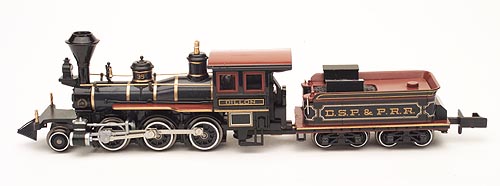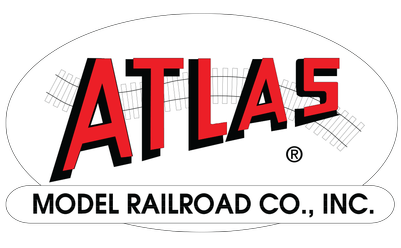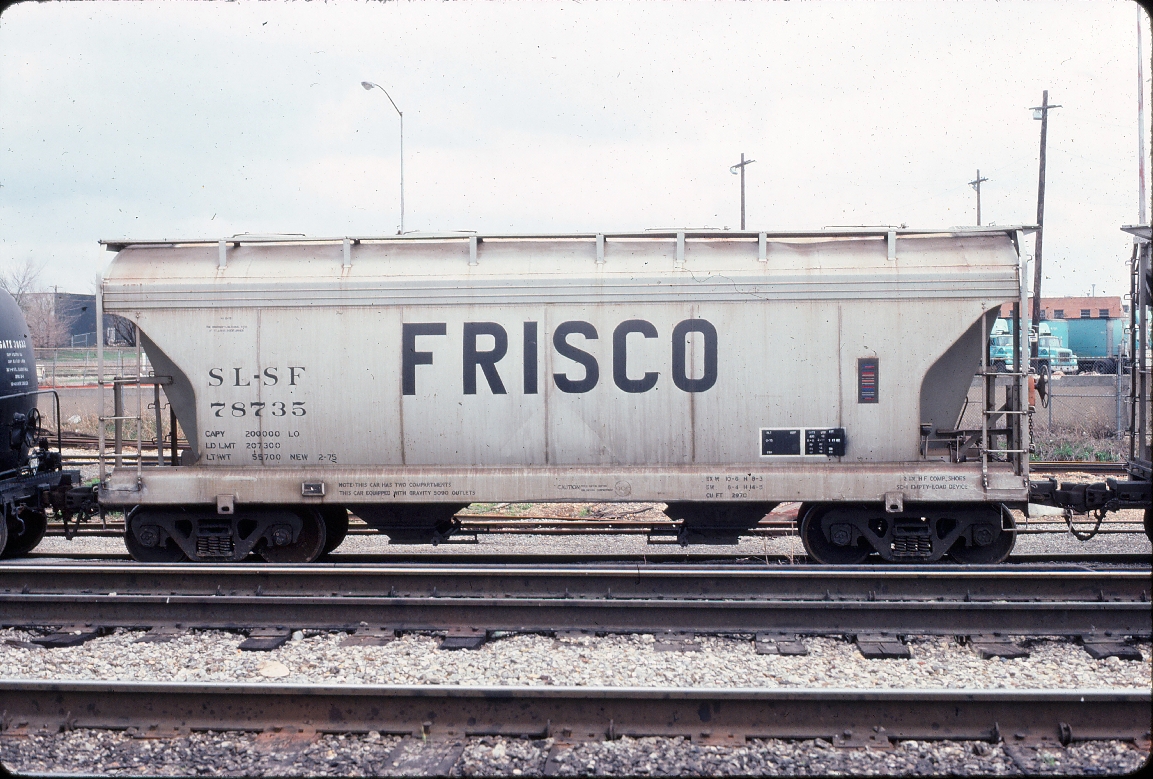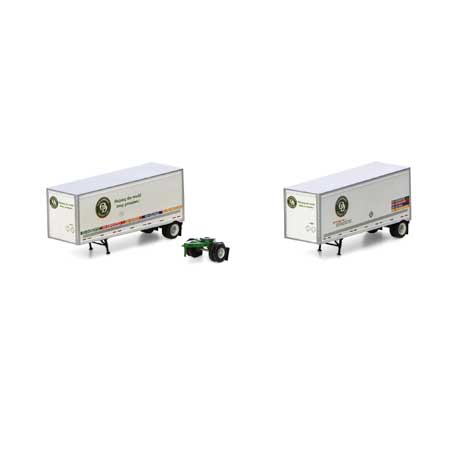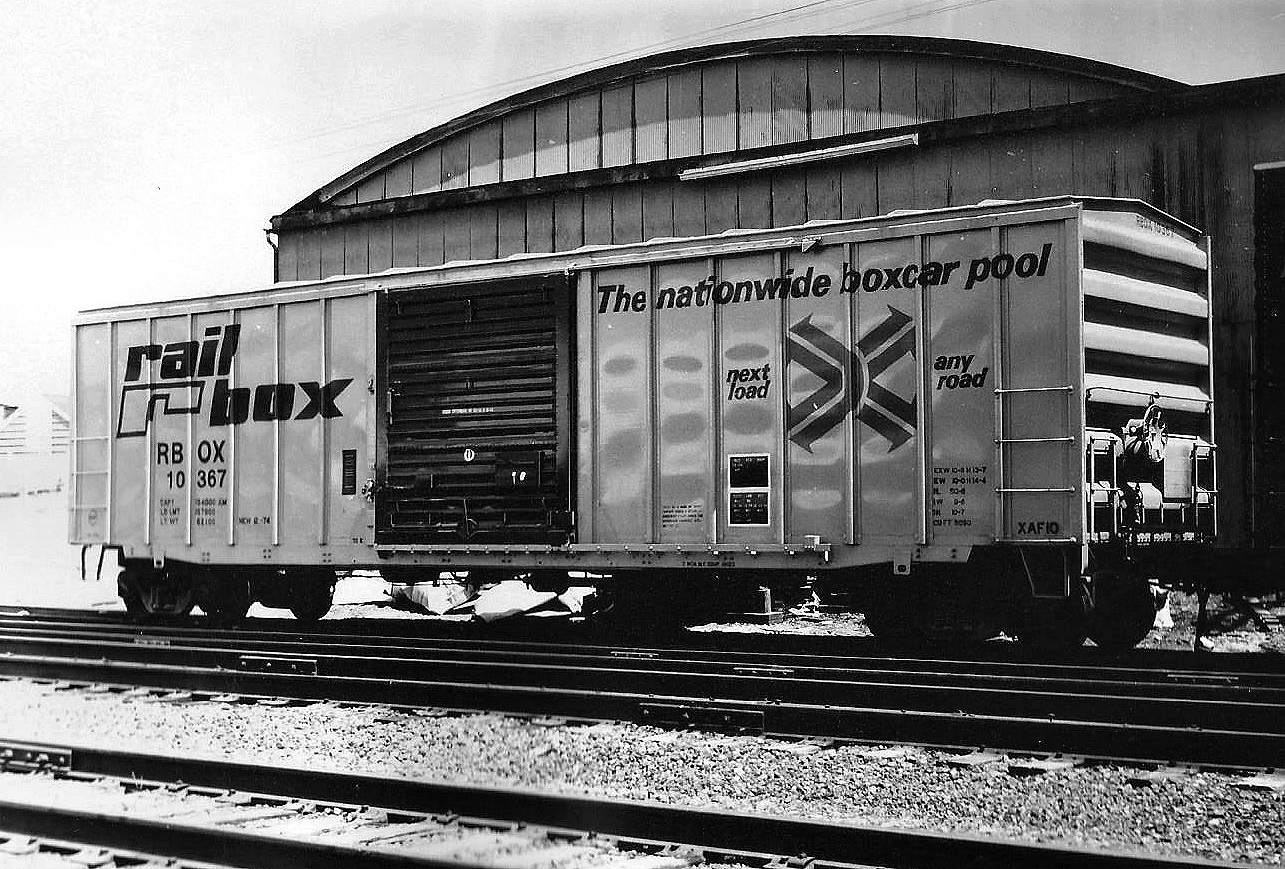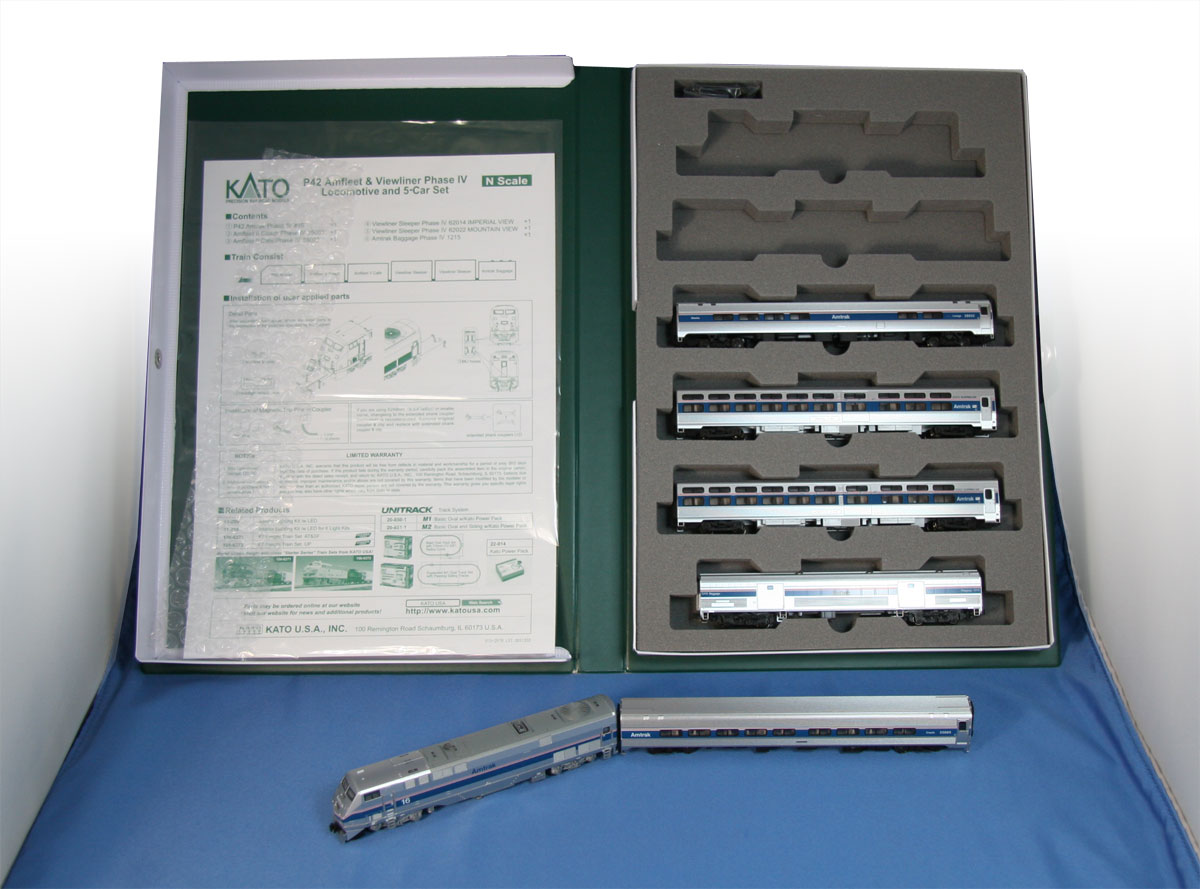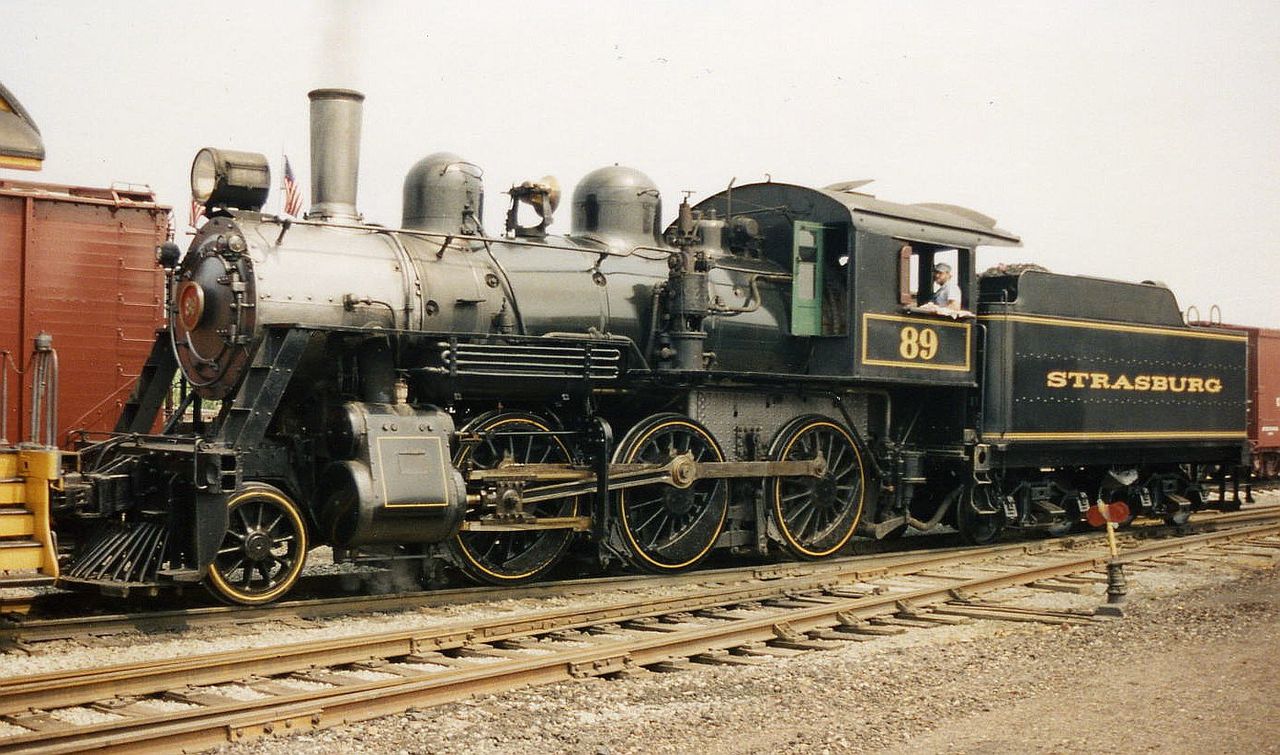Atlas - 41610 - Locomotive, Steam, 2-6-0 Mogul - Denver South Park & Pacific - 35
| Stock Number | 41610 |
| Original Retail Price | $129.95 |
| Brand | Atlas |
| Manufacturer | Atlas |
| Body Style | Atlas Steam Engine 2-6-0 Mogul |
| Prototype Vehicle | Locomotive, Steam, 2-6-0 Mogul (Details) |
| Road or Company Name | Denver South Park & Pacific (Details) |
| Reporting Marks | DSP&P |
| Road or Reporting Number | 35 |
| Paint Color(s) | Black and Gold |
| Additional Markings/Slogan | Dillon |
| Coupler Type | AccuMate Magnetic Knuckle |
| Wheel Type | Chemically Blackened Metal |
| Wheel Profile | Small Flange (Low Profile) |
| DCC Readiness | No |
| Release Date | 2005-08-01 |
| Item Category | Locomotives |
| Model Type | Steam |
| Model Subtype | 2-6-0 |
| Model Variety | Mogul |
| Prototype Region | North America |
| Prototype Era | NA Era I: Early Steam (1835 - 1900) |
| Scale | 1/160 |
Prototype History:
Under the Whyte notation for the classification of steam locomotives, 2-6-0 represents the wheel arrangement of two leading wheels on one axle, usually in a leading truck, six powered and coupled driving wheels on three axles and no trailing wheels. This arrangement is commonly called a Mogul.
Although examples were built as early as 1852–53 by two Philadelphia manufacturers, Baldwin Locomotive Works and Norris Locomotive Works, these first examples had their leading axles mounted directly and rigidly on the frame of the locomotive rather than on a separate truck or bogie. On these early 2-6-0 locomotives, the leading axle was merely used to distribute the weight of the locomotive over a larger number of wheels. It was therefore essentially an 0-8-0 with an unpowered leading axle and the leading wheels did not serve the same purpose as, for example, the leading trucks of the 4-4-0 American or 4-6-0 Ten-Wheeler types which, at the time, had been in use for at least a decade.
It is likely that the locomotive class name derives from a locomotive named Mogul, built by Taunton Locomotive Manufacturing Company in 1866 for the Central Railroad of New Jersey. However, it has also been suggested that, in England, it derived from the engine of that name built by Neilson and Company for the Great Eastern Railway in 1879. From Wikipedia
Although examples were built as early as 1852–53 by two Philadelphia manufacturers, Baldwin Locomotive Works and Norris Locomotive Works, these first examples had their leading axles mounted directly and rigidly on the frame of the locomotive rather than on a separate truck or bogie. On these early 2-6-0 locomotives, the leading axle was merely used to distribute the weight of the locomotive over a larger number of wheels. It was therefore essentially an 0-8-0 with an unpowered leading axle and the leading wheels did not serve the same purpose as, for example, the leading trucks of the 4-4-0 American or 4-6-0 Ten-Wheeler types which, at the time, had been in use for at least a decade.
It is likely that the locomotive class name derives from a locomotive named Mogul, built by Taunton Locomotive Manufacturing Company in 1866 for the Central Railroad of New Jersey. However, it has also been suggested that, in England, it derived from the engine of that name built by Neilson and Company for the Great Eastern Railway in 1879. From Wikipedia
Road Name History:
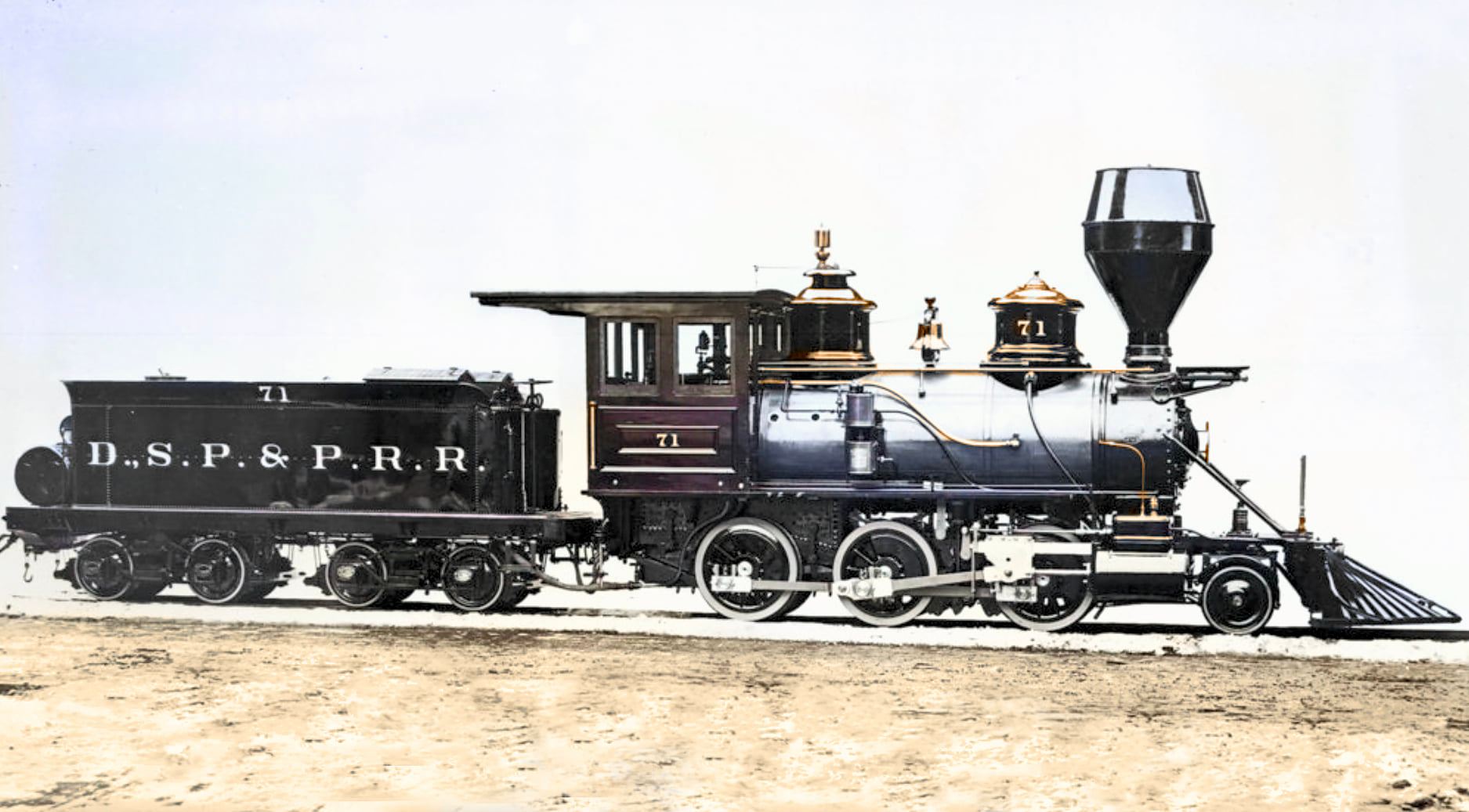 The DSP&P was established in 1872 to build a 3’ gauge line from Denver to Colorado’s South Park and on to the Gunnison area. Ultimately, they wished to build two lines from there, one southwest into the mining regions of the San Juan Mountains then to the Colorado River, through the Grand Canyon and on to Southern California. The other would follow what would later become the Rio Grande mainline to Salt Lake City then on to San Francisco. Construction started in 1873. The biggest challenge of building railroads into the untamed West was reaching a source of traffic before you ran out of cash. This was not a problem for the DSP&P. The first line to open was the Morrison Branch in 1874. This brought large amounts of coal, stone and lumber traffic to the DSP&P right away. Construction of the mainline pressed on reaching Webster at the foot of Kenosha Pass in 1879. By that time, the DSP&P was earning $1,200 on a typical day with less than $500 in operating expenses. By that October, they had crossed the South Park (often laying track night and day across the level park) to Como and the base of Trout Creek Pass. More coal mines were served in that area.
The DSP&P was established in 1872 to build a 3’ gauge line from Denver to Colorado’s South Park and on to the Gunnison area. Ultimately, they wished to build two lines from there, one southwest into the mining regions of the San Juan Mountains then to the Colorado River, through the Grand Canyon and on to Southern California. The other would follow what would later become the Rio Grande mainline to Salt Lake City then on to San Francisco. Construction started in 1873. The biggest challenge of building railroads into the untamed West was reaching a source of traffic before you ran out of cash. This was not a problem for the DSP&P. The first line to open was the Morrison Branch in 1874. This brought large amounts of coal, stone and lumber traffic to the DSP&P right away. Construction of the mainline pressed on reaching Webster at the foot of Kenosha Pass in 1879. By that time, the DSP&P was earning $1,200 on a typical day with less than $500 in operating expenses. By that October, they had crossed the South Park (often laying track night and day across the level park) to Como and the base of Trout Creek Pass. More coal mines were served in that area.
At this point, DSP&P changed their focus. Instead of heading for the San Juans (to which the D&RG was already headed) they aimed for the mining region around Leadville. D&RG was also headed to Leadville by following the Arkansas River but the South Park Line was closer. They built over Trout Creek Pass reaching Buena Vista in the spring of 1880. By this time, Jay Gould had control of the Denver & Gio Grande and was buying a large stake in the DSP&P. That brought the two parties to the table. D&RG would build from Buena Vista to Leadville and grant DSP&P trackage rights. DSP&P would continue building west over Alpine Pass and into the Gunnison area and grant trackage rights to D&RG from Buena Vista to Gunnison. That year, Gould obtained full ownership of the DSP&P. While the DSP&P corporate structure remained the same and the public face remained the Denver South Park & Pacific, from a management standpoint, it became the South Park Division of the Union Pacific on the first day of 1881. The line to Gunnison required building the 1,800 foot Alpine Tunnel at an elevation of 11,600 feet. This was the longest narrow gauge tunnel in Colorado. The ridge they tunneled through turned out to be loose rock with underground streams running through it. California Redwood timbers had to be brought in to support the ceiling and walls. There were 4% grades on either side of the pass. An engine house and railroad hotel were built outside the west portal but the elevation and harsh weather made it an unenviable assignment. DSP&P reached Gunnison in 1882, a full year after the D&RG had built their own line over the easier Marshall Pass. Construction of the South Park line continued from Gunnison north to coal mines at Baldwin. Construction crews then turned west toward Utah but the D&RG was way ahead of them and only four miles of track were laid before westward expansion was suspended.
Then in 1884, D&RG canceled their trackage rights agreement, shutting out the DSP&P from Leadville. DSP&P would have to build their own line. Building from the end of their branch to Fairplay was closest but would require boring another long tunnel. They could build alongside the D&RG line from Buena Vista but that line already had the preferred side of the valley. The option they chose was to extend the Breckenridge Branch north to Dickey then southwest to Climax and Leadville. This line, which crossed the Continental Divide twice, was opened in 1884. Although the DSP&P’s route from Denver to Leadville was just 151 miles, versus 276 for the D&RG, the D&RG was already well established. The DSP&P last turned a profit while the Leadville line was still under construction. In 1888, they slipped into receivership and in 1889 it was reorganized as the Denver Leadville & Gunnison.

At this point, DSP&P changed their focus. Instead of heading for the San Juans (to which the D&RG was already headed) they aimed for the mining region around Leadville. D&RG was also headed to Leadville by following the Arkansas River but the South Park Line was closer. They built over Trout Creek Pass reaching Buena Vista in the spring of 1880. By this time, Jay Gould had control of the Denver & Gio Grande and was buying a large stake in the DSP&P. That brought the two parties to the table. D&RG would build from Buena Vista to Leadville and grant DSP&P trackage rights. DSP&P would continue building west over Alpine Pass and into the Gunnison area and grant trackage rights to D&RG from Buena Vista to Gunnison. That year, Gould obtained full ownership of the DSP&P. While the DSP&P corporate structure remained the same and the public face remained the Denver South Park & Pacific, from a management standpoint, it became the South Park Division of the Union Pacific on the first day of 1881. The line to Gunnison required building the 1,800 foot Alpine Tunnel at an elevation of 11,600 feet. This was the longest narrow gauge tunnel in Colorado. The ridge they tunneled through turned out to be loose rock with underground streams running through it. California Redwood timbers had to be brought in to support the ceiling and walls. There were 4% grades on either side of the pass. An engine house and railroad hotel were built outside the west portal but the elevation and harsh weather made it an unenviable assignment. DSP&P reached Gunnison in 1882, a full year after the D&RG had built their own line over the easier Marshall Pass. Construction of the South Park line continued from Gunnison north to coal mines at Baldwin. Construction crews then turned west toward Utah but the D&RG was way ahead of them and only four miles of track were laid before westward expansion was suspended.
Then in 1884, D&RG canceled their trackage rights agreement, shutting out the DSP&P from Leadville. DSP&P would have to build their own line. Building from the end of their branch to Fairplay was closest but would require boring another long tunnel. They could build alongside the D&RG line from Buena Vista but that line already had the preferred side of the valley. The option they chose was to extend the Breckenridge Branch north to Dickey then southwest to Climax and Leadville. This line, which crossed the Continental Divide twice, was opened in 1884. Although the DSP&P’s route from Denver to Leadville was just 151 miles, versus 276 for the D&RG, the D&RG was already well established. The DSP&P last turned a profit while the Leadville line was still under construction. In 1888, they slipped into receivership and in 1889 it was reorganized as the Denver Leadville & Gunnison.
Brand/Importer Information:
In 1924 Stephan Schaffan, Sr. founded the Atlas Tool Company in Newark, New Jersey. In 1933 his son, Stephan Schaffan, Jr., came to work for his father at the age of sixteen. Steve Jr. built model airplanes as a hobby and frequented a local hobby shop. Being an enterprising young man, he would often ask the owner if there was anything he could do to earn some extra spending money. Tired of listening to his requests, the hobby-store owner threw some model railroad track parts his way and said, "Here, see if you can improve on this".
In those days, railroad modelers had to assemble and build everything from scratch. Steve Jr. created a "switch kit" which sold so well, that the entire family worked on them in the basement at night, while doing business as usual in the machine shop during the day.
Subsequently, Steve Jr. engineered the stapling of rail to fiber track, along with inventing the first practical rail joiner and pre-assembled turnouts and flexible track. All of these products, and more, helped to popularize model railroading and assisted in the creation of a mass-market hobby. The budding entrepreneur quickly outgrew the limitations of a basement and small garage operation. Realizing they could actually make a living selling track and related products, Steve and his father had the first factory built in Hillside, New Jersey at 413 Florence Avenue in 1947. On September 30, 1949, the Atlas Tool Company was officially incorporated as a New Jersey company.
In 1985, Steve was honored posthumously for his inventions by the Model Railroad Industry Association and was inducted into the Model Railroad Industry Hall of Fame in Baltimore, Maryland. In addition, Steve was nominated and entered into the National Model Railroad Association Pioneers of Model Railroading in 1995.
In the early 1990s, the Atlas Tool Company changed its name to Atlas Model Railroad Company, Inc.
In those days, railroad modelers had to assemble and build everything from scratch. Steve Jr. created a "switch kit" which sold so well, that the entire family worked on them in the basement at night, while doing business as usual in the machine shop during the day.
Subsequently, Steve Jr. engineered the stapling of rail to fiber track, along with inventing the first practical rail joiner and pre-assembled turnouts and flexible track. All of these products, and more, helped to popularize model railroading and assisted in the creation of a mass-market hobby. The budding entrepreneur quickly outgrew the limitations of a basement and small garage operation. Realizing they could actually make a living selling track and related products, Steve and his father had the first factory built in Hillside, New Jersey at 413 Florence Avenue in 1947. On September 30, 1949, the Atlas Tool Company was officially incorporated as a New Jersey company.
In 1985, Steve was honored posthumously for his inventions by the Model Railroad Industry Association and was inducted into the Model Railroad Industry Hall of Fame in Baltimore, Maryland. In addition, Steve was nominated and entered into the National Model Railroad Association Pioneers of Model Railroading in 1995.
In the early 1990s, the Atlas Tool Company changed its name to Atlas Model Railroad Company, Inc.
Item created by: gdm
on 2015-11-27 07:15:09
Last edited by: gdm on 2018-06-21 12:53:43
If you see errors or missing data in this entry, please feel free to log in and edit it. Anyone with a Gmail account can log in instantly.
Last edited by: gdm on 2018-06-21 12:53:43
If you see errors or missing data in this entry, please feel free to log in and edit it. Anyone with a Gmail account can log in instantly.


